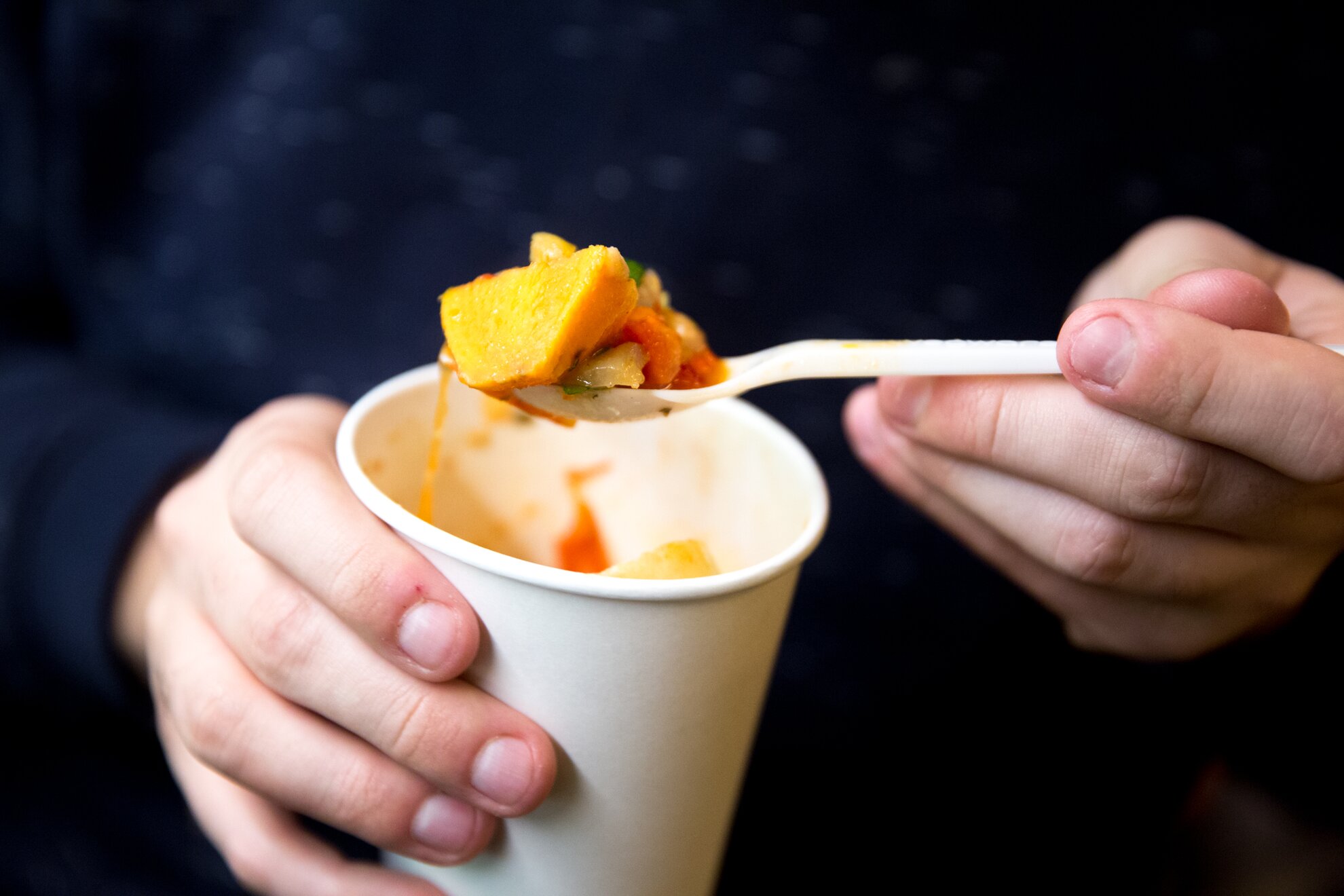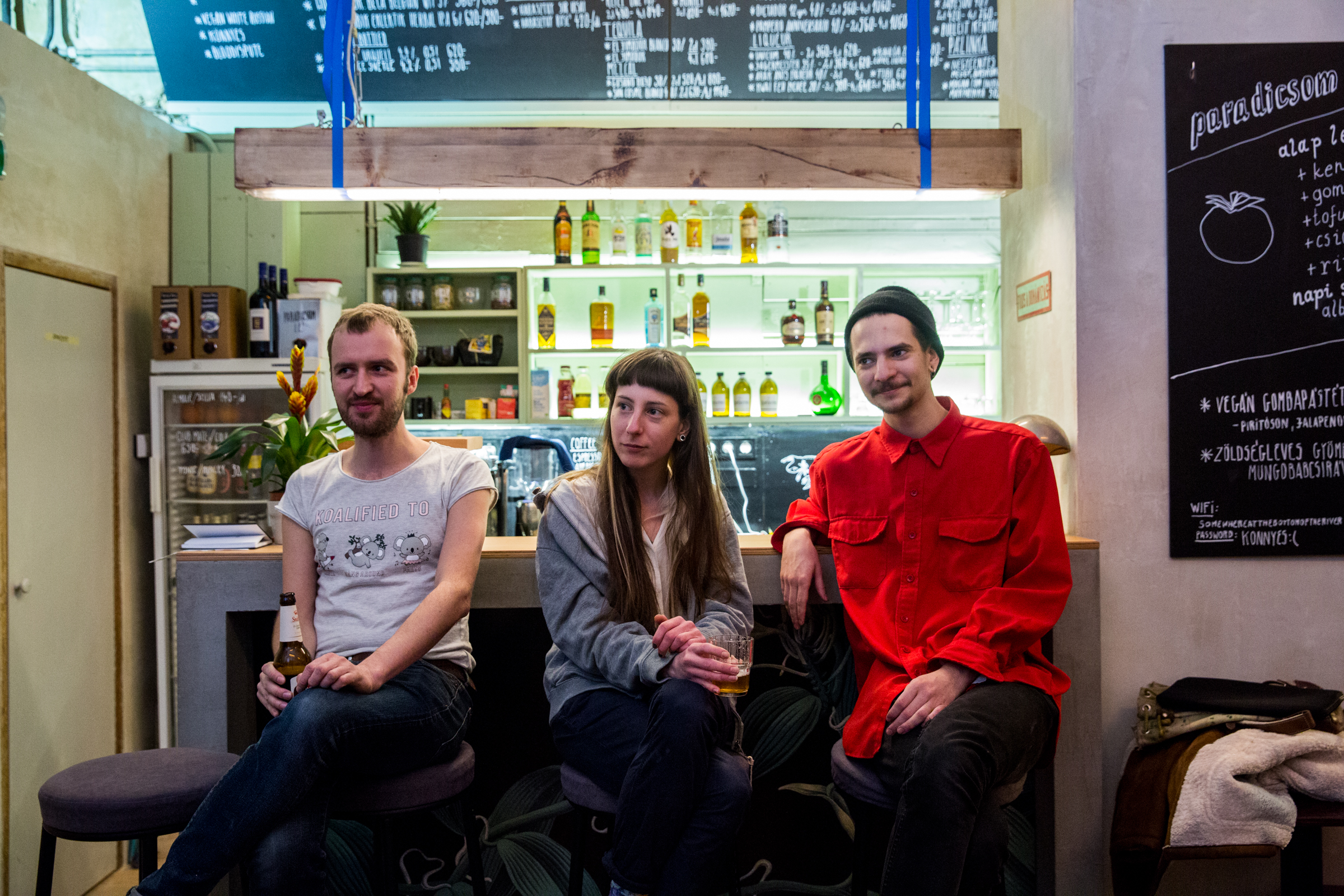Generations of Hungarian households have happily tucked into lecsó, a stew of tomatoes, peppers, onion and paprika – but few restaurants serve it. With this in mind, two Magyars who ran a WiFi-free bar in Kiev, András Kocsis and Ádám Lang, hit upon the idea of creating place specifically dedicated to this most revered of warming comfort foods.

If a Hungarian wine bar, borozó, sells wine, bor, and a beer bar, söröző, sells beer, sör, then lecsó, they reckoned, should be the stock in trade of the lecsózó. This new concept launched by the boys this month a stone’s throw from Rákóczi Square is not only Budapest’s first lecsózó but – ta-da! – the city’s first pop-up lecsózó.
“There’s a real lucky twist to this story,” says András. “Looking around with Ádám, we didn’t really find a place where we could have put in a decent kitchen. We didn’t know what to do. Then Tímea Kondorossy, the ideas person behind Somewhereatthebottomoftheriver suggested we move in here. We opened up in no time.”

A pop-up letchorie might be bit of a mismoner, albeit an original one. This one doesn’t so much pop up as sit alongside Somewhereatthebottomoftheriver, itself a cozy enough drinkerie of quality beer (most prominently Primátor), boho chatter and laptop concentration. Your lecsó can therefore be consumed with fine brews from Náchod, Czech Republic.
The lecsó itself comes in several varieties.

“Because lecsó consists of just a few ingredients,” András explains, “every household has its own well-made recipe. At the same time, for this same reason, it is possible to experiment with it. Regional variants include French ratatouille, shakshouka of the Middle East, Moroccan tagine and Sicilian caponata. For example, we have an Andalusian version inspired by eggplant, chickpeas and sweet potatoes.”

Options run from a portion of the basic version (700 forints) or the daily special (1,000 forints), with a handful of meaty and vegetarian ones in between. Tofu bacon and chickpeas feature. Bread is an extra 100 forints and, with lecsó, pretty much essential. Whichever type you choose can be ordered to go, this least elegant of street foods sold in a handy paper cup.




